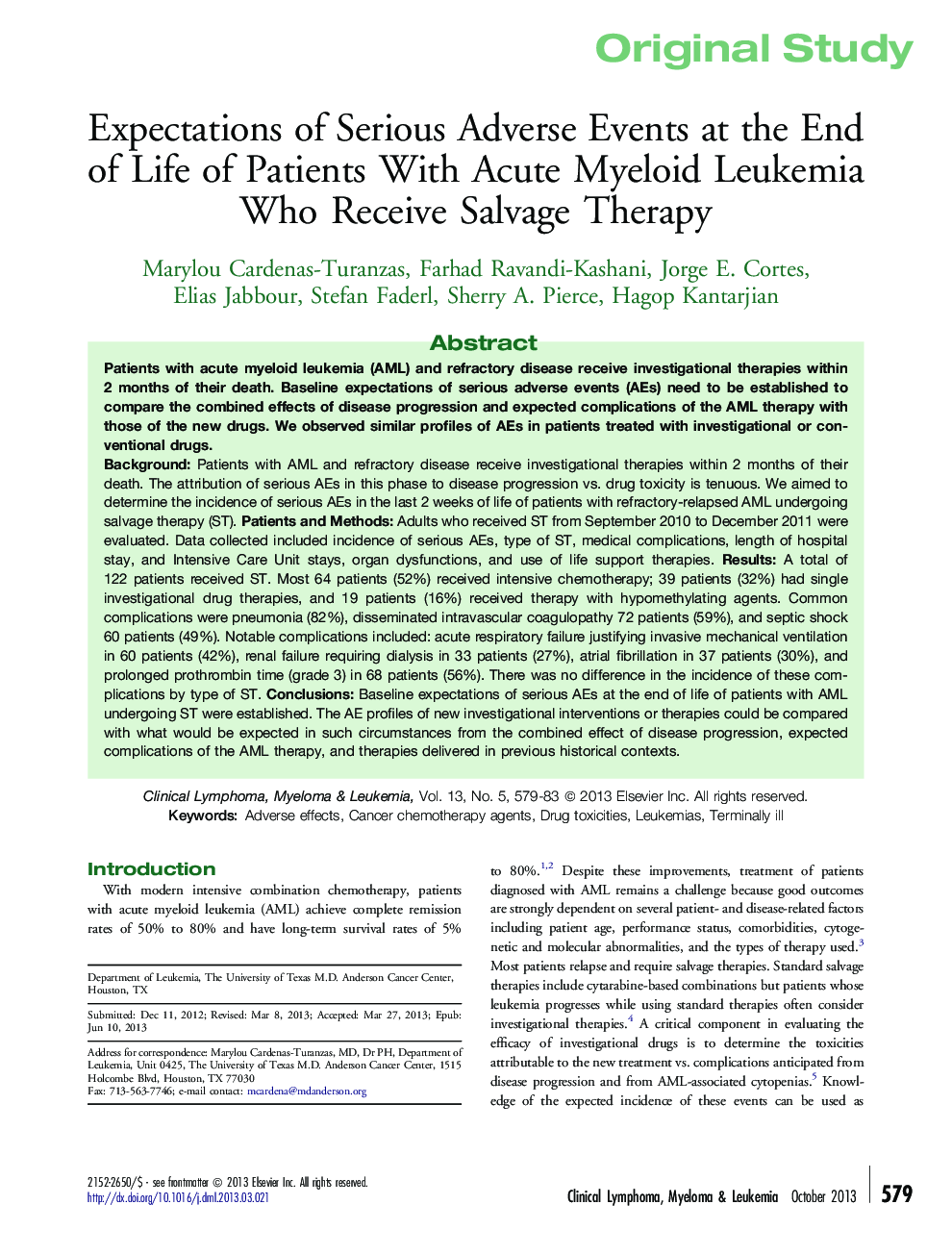| Article ID | Journal | Published Year | Pages | File Type |
|---|---|---|---|---|
| 2754724 | Clinical Lymphoma Myeloma and Leukemia | 2013 | 5 Pages |
BackgroundPatients with AML and refractory disease receive investigational therapies within 2 months of their death. The attribution of serious AEs in this phase to disease progression vs. drug toxicity is tenuous. We aimed to determine the incidence of serious AEs in the last 2 weeks of life of patients with refractory-relapsed AML undergoing salvage therapy (ST).Patients and MethodsAdults who received ST from September 2010 to December 2011 were evaluated. Data collected included incidence of serious AEs, type of ST, medical complications, length of hospital stay, and Intensive Care Unit stays, organ dysfunctions, and use of life support therapies.ResultsA total of 122 patients received ST. Most 64 patients (52%) received intensive chemotherapy; 39 patients (32%) had single investigational drug therapies, and 19 patients (16%) received therapy with hypomethylating agents. Common complications were pneumonia (82%), disseminated intravascular coagulopathy 72 patients (59%), and septic shock 60 patients (49%). Notable complications included: acute respiratory failure justifying invasive mechanical ventilation in 60 patients (42%), renal failure requiring dialysis in 33 patients (27%), atrial fibrillation in 37 patients (30%), and prolonged prothrombin time (grade 3) in 68 patients (56%). There was no difference in the incidence of these complications by type of ST.ConclusionsBaseline expectations of serious AEs at the end of life of patients with AML undergoing ST were established. The AE profiles of new investigational interventions or therapies could be compared with what would be expected in such circumstances from the combined effect of disease progression, expected complications of the AML therapy, and therapies delivered in previous historical contexts.
